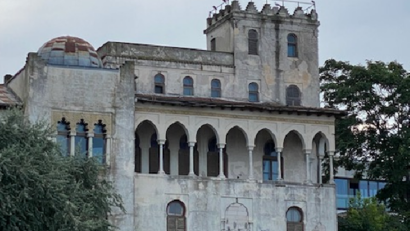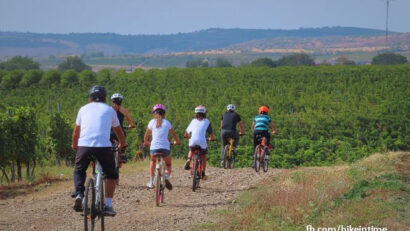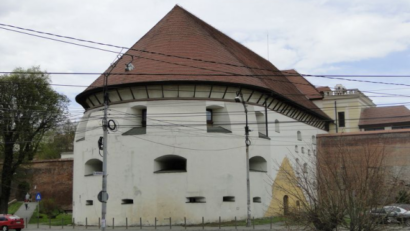Suceava County
This year, it is 629 years since the city of Suceava was documented.

Daniel Onea, 12.10.2017, 14:33
Suceava is a city in the historical province of Bukovina in North-Eastern Romania. The city hosts a wide range of cultural events. Its monuments and museums give an insight into the history of the area. Cultural tourism, active tourism, fishing and hunting, spa tourism, an irresistible cuisine and last but not least, the locals’ hospitality are the main arguments of an excursion or holiday in Bukovina. Lacramioara Beilic from the Bukovina Tourism Association says that the number of tourists has steadily grown in recent years.
Lacramioara Beilic: “The main reason why tourists come to Bukovina, be they Romanians or foreigners, is because they want to see the monasteries with outside frescoes, which are monuments on the UNESCO Heritage list. They are the main attraction in the area. By visiting those monuments, tourists want to return to spirituality and tradition.”
The starting point in exploring the region is the city of Suceava, the Suceava County Capital. Documented in 1388, Suceava was the seat of Moldavia until 1566, when Moldavia’s capital moved to Iasi. Situated about 430 km far from Bucharest, the city of Suceava is an accessible destination due to its airport, road and railway infrastructure.
Suceava boasts a lot of historical and religious monuments, which places the city along with the monasteries with outside and inside frescoes in Bukovina on the map of cultural tourism. Claudiu Bradatan, director of the Tourist Information and Promotion Centre has more details about Suceava.
Claudiu Bradatan: “Last year, the programme for revamping the Suceava Fortress was completed and the fortress now looks great. We try to capitalize on all tourist attractions of the city; if Bukovina is well known at home and abroad for its painted monasteries, which are not in Suceava, we try to draw attention to the city’s tourist heritage. Twice a week, tourists can go on sightseeing tours of the city organized by the National Tourist Information Centre, which also boasts qualified guides and can thus see the tourist attractions of Suceava.”
Starting this year, the promotion strategy is centered on the city, Claudiu Bradatan told us:
Claudiu Bradatan: “We know very well that tourism agencies handling incoming tourism prefer to offer tours of the monasteries, to the detriment of a tour of the city. We want to promote Suceava, the city, as a tourist destination, or a city break destination. The airport was modernized in 2016, and the passenger traffic is impressive. We want to prove that Bukovina is more than its monasteries.”
Pojorata is a village about 80 km away from Suceava, and around it, within a 20 km radius, you’ll find over 30 tourist objectives, from historical monuments to nature reserves. Here is Ioan Bogdan Codreanu, the local mayor.
Bogdan Codreanu: “Generally, in Bukovina and Pojorata we have domestic and foreign tourists equally. They come to witness the beauty and the traditions, the culture, all that we have inherited from our forefathers. From a tourism point of view, Pojorata has seen significant growth. In Pojorata, due to its favorable geographical location, there are many attractions, with many places that provide tourists with the possibility of practicing all types of tourism: mountain, cultural, hunting, fishing, agrotourism, business, as well as confessional tourism, considering the large number of monasteries and churches we have inherited. The village is favored by the fact that it is on the eastern side of the Eastern Carpathians, where you can go trekking, climbing, mountain biking, paragliding, and practice all sorts of winter sports.”
Petru Ariciuc, head of mountain rescue with Suceava County, has extended an invitation to Vatra Dornei:
Petru Ariciuc: “Vatra Dornei is a spa that appeared on the European map in the 1880s and 1890s, when the first buildings were erected in order to form the core of the city: the postal service house, the administration of spas, the Sentinel Spring, City Hall. Following ample expert studies, around 1850 the Austro-Hungarian authorities decided to set up a spa here. You can see the fingerprint of the empire on every building. In the interwar period, the spa developed a lot. Treatment capacity developed. After the revolution of 1989, like most resorts it stagnated, then regressed. Since 2000 we have seen constant growth, though. Right now there are three treatment bases. Vatra Dornei, the resort, is surrounded by four major mountain massifs: Suhard, Giumalau, Calimani, and Bistrita. The trails are easy, three to seven hours walking time. You can spend seven days around the Dorna Basins alone. In the spa you can get treatment for peripheral nervous system conditions, or cardiovascular conditions.”
A trip to Suceava County can turn into a true incursion into the history of the Romanian people. By going to the surrounding villages in the county, you can see the craftsmen at work, artisans with a long tradition in woodworking, pottery and weaving.






























